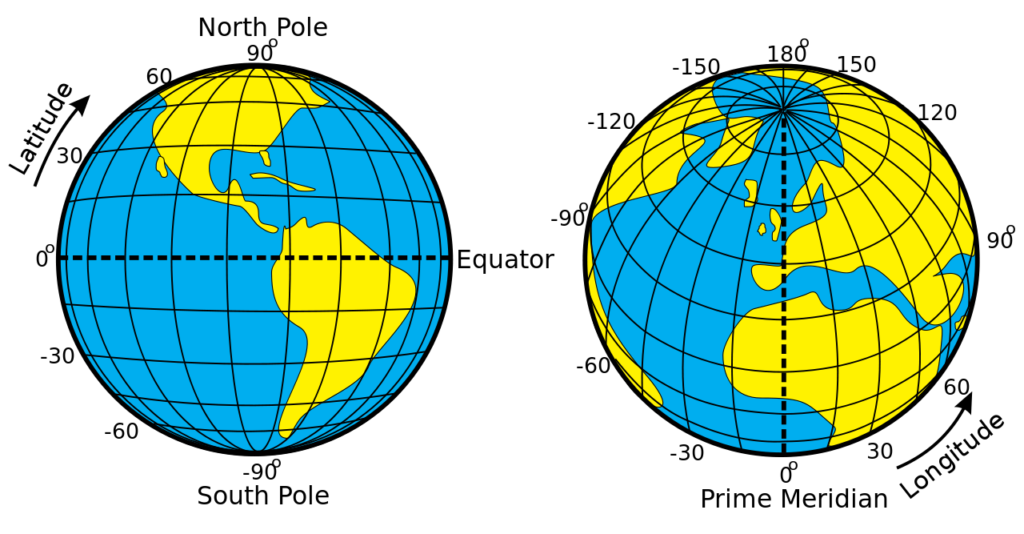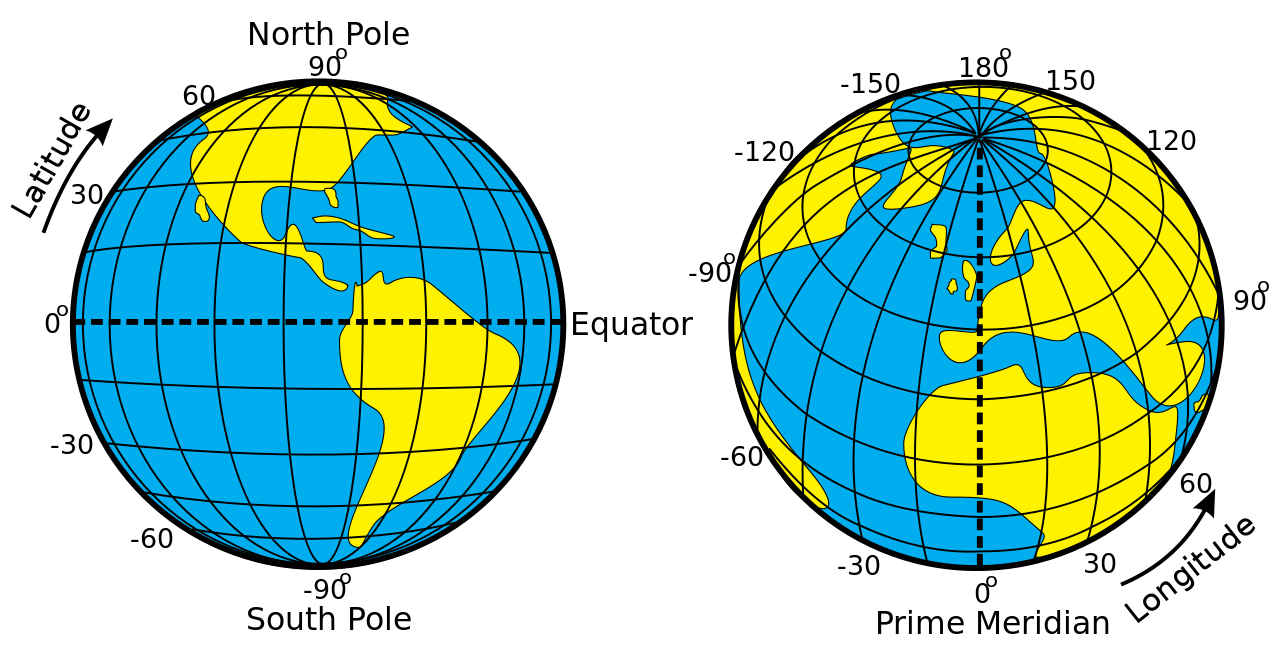Decimal Degrees to Meters on an Oblate Spheroid
Earth can be approximated as an oblate spheroid. Because of this, degrees of latitude and longitude are equivalent to different lengths at different locations on Earth. Using WGS84 and the meridian distance integral, the distance in meters (d) of a degree of latitude at a given latitude in decimal degrees (y) can by approximated by:
![]() Using this approximation, we can see that a degree of latitude at the equator is approximately 110.57 km, while a degree of latitude at a pole is approximately 111.69 km. The variation of distance within a degree of longitude at the equator and a pole is much greater (see figure below). Using the same logic, the distance in meters (d) of a degree of longitude at a given degree of latitude in decimal degrees (y) can be approximated by:
Using this approximation, we can see that a degree of latitude at the equator is approximately 110.57 km, while a degree of latitude at a pole is approximately 111.69 km. The variation of distance within a degree of longitude at the equator and a pole is much greater (see figure below). Using the same logic, the distance in meters (d) of a degree of longitude at a given degree of latitude in decimal degrees (y) can be approximated by:
 where a is the equatorial radius, 6378137.0 m, and e is the eccentricity, 0.081819190842613. From this approximation, we can see that a degree of longitude at the equator is approximately 111.32 km, a degree of longitude at a latitude of 45.0 degrees is approximately 78.85 km, and a degree of longitude at a latitude of 89.0 degrees is approximately 1.95 km.
where a is the equatorial radius, 6378137.0 m, and e is the eccentricity, 0.081819190842613. From this approximation, we can see that a degree of longitude at the equator is approximately 111.32 km, a degree of longitude at a latitude of 45.0 degrees is approximately 78.85 km, and a degree of longitude at a latitude of 89.0 degrees is approximately 1.95 km.
 (figure credit: wikimedia.org)
(figure credit: wikimedia.org)
